Archive for November, 2010
November 30th, 2010 by
Admin
Categories:
homes for sale,
Moving,
Moving Day,
Moving Industry,
Plan Your Relocation,
Real Estate,
Relocation,
Relocation Data,
Relocation.com Survey,
rentals Comments:
No Comments » 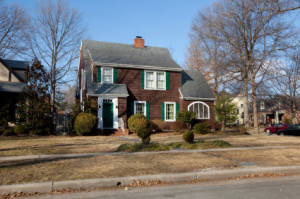
Home Sweet Small Home - More Americans Prefer Smaller Homes in the Suburbs, According to a New Relocation.com Survey
Could it be true? Has the “McMansion Era” finally come to an end? Surprisingly, recent survey results reveal that a majority of Americans prefer smaller homes.
During the 80s and 90s, large, opulent homes, dubbed “McMansions,” were what many U.S. homebuyers wanted. However, in our recent consumer lifestyle survey of nearly 1,500 Americans between the ages of 18 and 60, 48 percent indicated that their ideal home size would range from 1,000 to 1,999 square feet, while less than a third said they’d want a 2,000 to 2,999-square-foot home.
What do you think – have the days of the 3,000+ square-foot McMansions come and gone?
Additionally, the survey found that cost of a residence is NOT the #1 deciding factor when purchasing a home. In fact, only 29 percent of respondents stated that living costs was the most important reason when relocating. We also found that Americans prefer to live in the suburbs (54 percent of respondents) and only 24 percent of those who responded preferred to live in an urban area.
Are you as surprised by these findings as we were? What do you think this means for Americans and real estate in the next five to 10 years?
(Click here for full survey results)
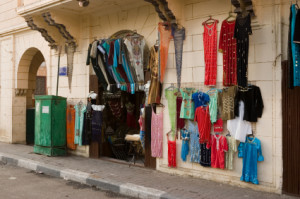
Have too many clothes? Swap them or give them away before you move.
By Serena Norr
Now that you are moving you can actually see how much stuff you own; and most likely, it’s a lot of items that you didn’t even realize that you had. The beauty of moving is that you not only get a chance to start fresh – whether that be for a new job or the desire to explore a new town – but you also can get rid of extra baggage in the form of your old belongings. One way to get rid of your items is to have a swap party. This is a great way to have an intimate and free clothing exchange. Add some food and drinks and you have a free going away party – as your old clothes find a new home. Party down this weekend with Relocation.com’s clothing swap party guide.
1. Gather your stuff. Before the party can happen, you’ll have to organize your items into piles of what you want and don’t want. As part of your packing plan, consider what items are of value but those that you no longer have use for. This might include an expensive jacket that you no longer wear or old worn in jeans. Devise these items into a pile for your party. If you have time, wash and fold these items beforehand.
2. Organize a size box or items by type. During the moving process, organization is the name of the game. Place your items size into various boxes – this will also make it easier for your guests to know where to place their clothes. If you are swapping other items, consider organizing them by type – so books would go with books, DVDs with DVDs, etc.
3. Send out the invite. Now that you know what items you want to get rid of (er, swap), it’s time to send out the invitation. You will know how many invites to send out based on the size of your home – or wherever you may be having it. Send out a mass email or an Evite to organize your guest list. In your invite, you can also ask your friends to contribute to the swap by bringing a food item or drink – no one wants to swap on an empty stomach.
4. Get the list together. Now that you know who is coming, set up your list and do a little shopping. Since you have assigned your friends to bring some food and drink items, your shopping should be minimal. Consider some basics like hummus and pita bread, carrots, chips, wine or beer, water and fruit.
5. Party time, excellent. It’s almost time to partay! Before your guests arrive, arrange all of your clothes into their appropriate size box (small, medium and large) and set up your food and drinks. As your guests arrive, explain your organization system and start swapping!
With any luck, your old clothes, knickknacks and books will have found a new home – clearing up some space making it easier (and lighter) for you on moving day. Taking something is also not a big deal – but be sure to choose wisely. You don’t want to end up with more items than you had before the swap!
November 24th, 2010 by
Admin
Categories:
Celebrity Real Estate,
condos,
foreclosures,
Home Improvement,
homes for sale,
Mortgages,
Moving,
Plan Your Move,
Plan Your Relocation,
Real Estate,
Relocation,
rentals Comments:
No Comments » 
Nicole Kidman's Living Room - Listed for Rent at $45,000/month. (Image Credit: Luxist)
By Serena Norr
Although T-Day has been on our brain, the real estate industry isn’t far behind – especially within the exciting world of celebrity real estate. This week, Nicole Kidman listed her NYC penthouse for rent at a whopping $45,000/month. For those that fork over the bucks, you can look forward to leasing a glass-filled living room and a space with three bedrooms, 3.5 bathrooms and 3,785-square-feet of living space. Fashion director, Nina Garcia, is also on the Beat this week for placing her NYC condo on the market for $8.5 million dollars. This pre-war two-unit duplex includes 3.5 bathrooms, 12-foot-tall windows and a washer and dryer. Chelsea Handler and Jonah Hill also made an appearance on the Beat for buying homes in California with price tags of $6 million and $ 2 million, respectively. Whether you live a McMansion or an apartment, your home is only as important as those you enjoy it with you. Happy Thanksgiving!

Nicole Kidman's Living Room - Listed for Rent at $45,000/month. (Image Credit: Luxist)
• Nicole Kidman Renting Her NYC Pad
Actress Nicole Kidman recently placed her Perry Street apartment up for rent. Asking price? $45,000 per month, which even for NYC is a bit ridiculous! Kidman and her husband, Keith Urban, won’t have to worry about their real estate issues that long – they recently purchased a new luxury penthouse at 200 11th Avenue that comes complete with a sky garage – a car elevator that is accessible by a lift to one’s apartment complex. For anyone that can afford the rental on the Perry Street, they can look forward to having 3,785-square-feet, three bedrooms and 3.5 bathrooms – not to mention a glass-filled living room (designed by Richard Meier) that stretches the full width of the apartment, including views of the West Side Highway and the Hudson River. Kidman and Urban also own homes in Sydney, Nashville and in Beverly Hills.
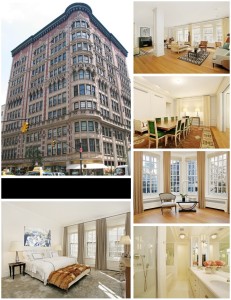
Nina Garcia's NYC Condo for Sale - Listed at $8.5 Million. (Image Credit: The RealEstalker)
• Fashion Director Nina Garcia Lists NYC Condo for $8.5 Million
Nina Garcia, fashion director and “Project Runway” judge recently listed her four-bedroom NYC two-unit condo for sale at $8.5 million. Located on East 66th street, the condo was originally purchased for $3,700,000 for one-unit and then $1,221,900 for an adjacent unit to create a two-unit condo. Located in a pre-war building, interested buyers will have to put down 50 percent of the asking price and expect to pay $4,080 in monthly maintenance charges. The condo also includes 3.5 bathrooms, 12-foot-tall windows, 11.5-foot tall ceilings, a large living room, a doorman, chandeliers, a washer/dryer and a kitchen with modern appliances such as the brands Subzero and Gaggenau appliances.
• Martha Stewart Drops Price on Home from $15.9 Million to $13.9 Million
According to Housing Watch.com, Martha Stewart recently lowered the price of her Perry Street penthouse from $15.9 million to $13.9 million. Another Richard Meier-designed apartment, Martha Stewart’s lower Manhattan pad includes 5,000-square-feet of living space, an on-site fitness center and 11-foot-high windows.

Chelsea Handler's New Home - Purchased for $6 Million. (Image Credit: The RealEstalker)
• Chelsea Handler Buys $6 Million Dollar Home
Chelsea Handler, host of “Chelsea Lately” and author recently purchased a 5,600-square-foot home in Bel Air, California for almost $6 million (she paid $5,942,500). Her electronically-controlled gated home includes 5,572-square-feet of living space, an outdoor kitchen with Viking appliances, a gym, six bedrooms and seven bathrooms. There is also two family rooms, a den and a backyard with a 50-foot pool, a raised spa and an outdoor fireplace.

Jonah Hill's New Hollywood Compound - Purchased for $2 Million. (Image Credit: The RealEstalker)
• Jonah Hills Buys Los Angeles Compound for Under $2 million
Jonah Hill of “Superbad” and “Get Him to the Greek” recently purchased a new home in Los Angeles for $1,865,000. The new estate, built in 1959, includes 3,660-square-feet of living space, four bedrooms, 4.5 bathrooms, a storage room, a children’s playhouse and a detached guest house with a private bathroom. Other amenities include a fireplace, a sky lit kitchen with modern appliances and a modern suite that overlooks the swimming pool.
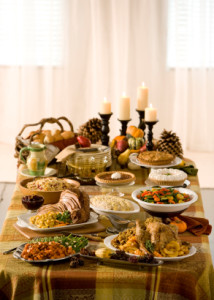
Dress Up Your Table This Thanksgiving.
By Faith Teel
Special to Relocation.com
Thanksgiving is a wonderful holiday that involves spending time with family and loved ones – not to mention a bountiful amount of delicious food that will have you stuffed for days. This is also one of the easiest holidays to decorate for since most of the key focus is on the food and less so on overly done decorations. With that being said, the only rule to keep in mind is that this holiday revolves around the dinner table. As long as you decorate with that in mind, you can have amazing decor on a small budget.
Help Guests Work Up an Appetite.
The easiest way to decorate any room is to pick a few bold colors, combine them with neutrals and stick to your chosen palette. Since Thanksgiving is all about food, you may want to stick with “appetizing colors,” which is how color experts refer to certain colors stimulate the appetite. These include many of the same colors that you see traditional holiday food: golden yellow, apple red, pumpkin orange, plum, brown, cream and sage green.
Inspiration from Nature.
Thanksgiving is also about the bounty of the autumn season, so a good place to get inexpensive (and elegant) decorations is the great outdoors. If you’re fortunate enough to have a garden, or if you live near a park, forest or other pleasant outdoor place, take a walk. As you stroll along, keep an eye out for natural materials that would look great on your table or in a big vase. For example, if you grew asparagus in your garden this year, pick a few of the dried, feathery ferns with their red berries still attached. Other great natural materials include pine cones, brightly-colored leaves, evergreen branches, holly, seed pods and feathery grasses. (Just make sure that if you’re picking plants from someone else’s land, you have the owner’s permission.)
Go Shopping.
If you live in the heart of the Big City and a nature walk is out of the question, drop by your local farmer’s market or grocery store instead. Food can be wonderful for decorating, and if you can eat your decor later, your grocery budget can double as your decorating budget. Pumpkins and squashes look wonderful in baskets, and if stored properly, they can keep until it’s time to bake them for Christmas dinner. Apples, oranges, lemons and pineapples, in a simple clear bowl, also make lovely displays and keep well.
Around the House.
The cheapest kinds of decorations are the ones that you already have. The first place to raid is your box of Christmas ornaments. This isn’t the time for snowmen and angels, but how about those red apple ornaments, or the ones shaped like birds, or the sparkly pears? Wouldn’t they look great hung from a chandelier?
I Want to Paint It Black (or Gold).
Keep an eye out for anything that can benefit from a coat of paint. Glittery gold or copper spray paint are excellent choices to shine up an old candlesticks or napkin rings.
For the Table:
Food, Glorious Food.
Of course, the centerpiece of any Thanksgiving holiday is the table. In fact, because the holiday is all about food, why not use the meal as the decoration, too? Make a pretty cake ahead of time and set it in the center of the table. (A covered cake plate can be useful to keep small fingers out of the icing.) Or tempt your guests’ appetites early by heaping chocolates or other pretty finger food in a tiered serving plate.
Bust Out the Good China.
Thanksgiving is a great time to get out the good china. If you’ve never been a fan of fine porcelain, you can still use your plainest everyday ware and dress it up with accessories such as cloth napkins and pretty goblets.
On the other hand, it’s tempting to hand out paper plates at big holidays like this, unless you can persuade someone else to wash the dishes. If you use disposable plates, there are still several ways to keep it classy. First, be sure to use sturdy plates that won’t let the gravy soak through. Solid colors will be more elegant than patterns. If you have a little bit of room in your budget, spring for classier disposables made from bamboo or clear plastic.
If you use disposable plates, try to use your best serving bowls. Even potato chips look better in a crystal dish!
A Little Bit of Fun:
Giving Thanks.
Because Thanksgiving is a family holiday, it’s a great time to involve your children in the decorating. Save your brown paper bags from the grocery store and help each child cut out a few leaf shapes. (You can also use colored construction paper.) Have them write something they’re thankful for, and then string the leaves together with a needle and thread. Hand your “Chain of Thankfulness” over a doorway or from a chandelier.
Old-School Decor.
Old-fashioned paper chains made from paper in pretty colors are another fun project. Update the idea by using pretty wrapping paper in brown and red and gold. (Kids really appreciate the chance to use nice paper.) You can also have the children use a needle and thread to string together plain popcorn.
For the Little Ones.
If you plan to seat the children at a separate table, consider adding a few fun features to keep them occupied while Mom and Dad eat. For example, you can cover the table with plain white butcher paper and put a basket of crayons (or washable markers) in the middle. You can even go a step further and add Thanksgiving-themed coloring books.
Family Fun.
The fun can continue into the evening with a “bobbing for apples” contest. To avoid the mess of a tub of water, hang apples from the ceiling by a long string. Have participants try to catch the apple in their teeth.
Sign Here.
Crafts don’t have to be limited to kids. This year, make a light-hearted “guest book” by drawing a pear-shaped turkey body on a nice sheet of parchment paper. Have each guest add a thumbprint in the tail area, than sign their names nearby.
Thanksgiving is a time to celebrate the things that make life sweet: a loving family and close friends. If you decorate with them in mind, you don’t need a big budget to have a welcoming home. Remember, a little creativity and using what you have goes a long way.
November 17th, 2010 by
Admin
Categories:
condos,
foreclosures,
homes for sale,
Moving,
Moving Day,
Plan Your Move,
Plan Your Relocation,
Real Estate,
Relocation,
rentals,
Travel Comments:
No Comments » 
The gorgeous beaches of Hawaii. (Photo Credit: Ryan Kawailani Ozawa)
Guest Bloggers: Aloha Living
Try as you might, but you can’t drive from Waikiki to check out the volcanic eruption at Kilauea. Hollywood is partially to blame for the widespread impression that all the many wonders of Hawaii can be found on a single island. In fact, there are actually eight major islands (and countless smaller islands and atolls) that make up the Hawaiian Islands.
Each island is very different. Whether you’re trying to decide where to visit on your next island vacation, or looking to buy your first Hawaii property or picking a place to buy a home in Hawaii, here’s a quick guide to islands of Hawaii.
Oahu
The most populated Hawaiian Island is probably the one most people are familiar with, home to the bustling tourist mecca of Waikiki, the historic World War II sites of Pearl Harbor, the world famous surf on the North Shore, and much more. There are over 870,000 people living on Oahu, most living and working in the capital city of Honolulu along the south shore of the island.
For the first-time visitor or home buyer, Oahu is usually your safest bet. On the tourist side, the island offers everything from unspoiled natural beauty to a modest nightlife, from high-end stores to a huge variety of one-of-a-kind boutique shops. You can also strike out on your own, or take advantage of countless organized activities and managed attractions.
When it comes to real estate, Oahu has $80,000 condos, $80 million estates, and truly everything in between. Whether you want to live in a high rise, on the beach, on a mountain ridge or deep in a valley, there’s plenty to choose from. Honolulu real estate offers the widest selection and largest inventory of any island. (As a result, it also has the most Hawaii foreclosures.)
Oahu has the most developed infrastructure, with solid public transportation, fairly ubiquitous Internet connectivity, low unemployment and a wide range of industries (though tourism and the military still dominate). Everything in Hawaii is expensive, but often less expensive in Honolulu, as most things shipped to the state comes through its airport and ports.
You get all the comforts of any American city, but of course, that means Honolulu is also the most crowded, has the worst traffic, and – by sheer math – has the most crime. But don’t panic. In 2010, Forbes magazine still named Honolulu the country’s third safest city.
The Big Island
The largest and youngest Hawaiian Island is the island of Hawaii. Of course, that’s also the name of the state, so most people refer to it as The Big Island. It’s the second most populous island, but that population is spread out over a much larger area. How big is it? All of the other Hawaiian Islands could fit on top of it, with a little room to spare. That’s a lot of Hawaii real estate!
Thanks to all that space, the Big Island offers the widest variety of climates and topographies. There are vast barren deserts, lush tropical rainforests, white sand beaches and snow-capped mountains. (Yes, snow in Hawaii.) Many locals roughly divide the Big Island into East Hawaii and West Hawaii, though of course there’s endless variety in between.
East Hawaii is the green, rainy, slower-paced side of the island. Hilo is the main city, situated on Hilo Bay, and it’s the second largest city in Hawaii. Even so, it feels like a small town. This side of the island is home to Hawaii Volcanoes National Park, perhaps the main attraction on the island. As far as real estate, it offers everything from affordable but empty and remote lots to multi-million dollar ocean-view estates.
West Hawaii is the sunny, dry, resort side of the island. It’s got the blue skies you expect from Hawaii postcards, and is home to several high-end resorts and resort communities. Kailua-Kona is a bustling commercial and tourist town, and further up the coast, huge developments offer a wide range of condos – popular as vacation or investment properties.
Maui
Once considered a runner-up to Oahu, Maui and its many amenities has – in many ways – surpassed the capital city in both appeal and value to both tourists and real estate investors alike. It’s the second largest of the Hawaiian Islands, and has the third largest population.
In terms of visitor attractions, Maui may very well be growing the next Waikiki. There are several resort areas, from Kihei, Wailea and Makena to the south, to Lahaina, Kaanapali and Kapalua to the west. All offer the great escape at moderate to high prices, with gorgeous beaches, and great scenery. The whole island has a lot to offer ocean lovers, shoppers, and sightseers. The infamous road to Hana and the summit of Haleakala are unique ways to get away from it all.
For those that want to call Maui home, the island’s real estate market is strong, with median prices below but easily comparable to those on Oahu. Maui sees as much activity in condos as it does in single family homes, with continuing high-end resort development bumping up property values in many neighborhoods. There is an abundance of vacation rental properties on Maui, even though they are heavily regulated.
Maui also has among the highest numbers of Realtors per capita of any island, let alone any region in the country. With as many as three percent of Maui residents carrying real estate licenses, you’ll either have a lot of options, or a lot of competition.
Kauai
Kauai is the oldest and among the smallest of the main Hawaiian Islands. Essentially a round dot on a map, the island is about 70 miles around, with one main highway wrapping most of the way around (though the Na Pali coast on the northwestern rim of the island is undeveloped).
Home to one of the wettest spots on earth, its lush green landscape is cut with deep valleys and tall waterfalls. Kauai also has some of the longest and widest stretches of white sand beaches in the state. Some of the most dramatic mountain vistas can be found on Kauai, towering over the many small and diverse towns scattered along its rim.
A popular destination for people looking to get away from the typical tourist traps, Kauai is more rural but nonetheless has an economy that relies largely on tourism. Indeed, Kauai has the most pronounced love-hate relationship with development. On one hand, many people are flocking to nab their piece of paradise, mostly in gleaming resort condos along the north ends of the island. On the other, strict regulations and occasional protests often stop construction and commerce in its tracks.
Island real estate on Kauai is always in flux, because there’s so little of it. The most active properties are condos, ranging from modest apartments to luxury oceanfront resorts. Nonetheless there is a healthy range of single-family homes, as well as more than a few multimillion dollar estates.
Molokai
There isn’t a single stoplight on Molokai, and what few businesses there are often close up shop before sunset. With a population of about 7,000 people, it’s just about the most rural main island you can easily visit, and it is often described as the most Hawaiian island as well.
Much of the island is inaccessible, or accessible only by boat, small plane, or donkey. But the island’s largely untouched natural beauty is second to none. As on Kauai, the few permanent residents on Molokai have long resisted large-scale developments, turning away planned resorts and offering instead small hotels, and condo and vacation home rentals.
There isn’t much to do on Molokai, but that’s the point. You can admire the striking sea cliffs and tall waterfalls, or make a pilgrimage to the historic town of Kalaupapa (where Saint Damien tended to the sick). You can go hiking, biking, swimming or sunbathing. But generally the less you do, the happier you’ll probably be.
In terms of real estate, the market is very small, and fairly slow moving. There are usually fewer than 200 active listings at any given time, most clustered at the remote and dry west end of Molokai or along the central south shore. Considering the deliberately slow pace of growth, you probably wouldn’t buy a Molokai property as an investment. And you really shouldn’t consider living there without spending a lot of quality time experiencing the place.
Lanai
Like Molokai, Lanai also boasts of its lack of traffic lights. Its population hovers below 3,000. But Lanai is also the home to two incredibly luxurious world-class resorts.
The island has been privately owned for much of modern history, much of it serving as the world’s largest pineapple plantation for much of the 20th century under James Dole (of the Dole Food Company), and now as a world-class getaway under billionaire David Murdock.
Apart from condos within the resort complexes, most of the properties available for sale on Lanai are single family homes, many in Lanai City. Prices range from a quarter of a million dollars for a modest cottage to nearly three million dollars for a custom oceanview home. There are also luxury homes clustered around the resorts in Koele and Manele.
Niihau
The smallest of the inhabited Hawaiian Islands, Niihau has been wholly owned by the Robinson Family since 1864. Most of its 130 or so residents speak Hawaiian as their first and only language, and very few people outside the family ever get to visit.
Kahoolawe
The smallest of the eight main Hawaiian Islands, Kahoolawe is uninhabited. For more than 50 years, the U.S. military used the island for target practice, hitting it with bombs, missiles, and massive test explosions. In 1994, the U.S. military formally handed control of Kahoolawe back to the state of Hawaii, and modest efforts are now underway to recover and restore what remains of its historic, cultural and natural resources.

According to Relocation.com's latest lifestyle survey, respondents believe that a well-manicured lawn indicates a safe neighborhood.
How many times have you heard that before? Well, last month we conducted a lifestyle survey where we asked 1,492 Americans between the ages 18 and 60 to determine what lifestyle factors play a key role in moving and relocation decisions in the U.S. As it turns out, most Americans do judge a book by its cover or at least judge a neighborhood by its general appearance!
The survey found that 75 percent of respondents believe that the most important factor in determining a neighborhood’s safety is the up-keep of surrounding homes and the general appearance of a home’s front lawn.
Could this mean that Americans will start to take better care of their lawns knowing that they’re being judged for their landscape? Furthermore, do you think this could possibly encourage members of the community to help their neighbors out by helping with their gardening in order to keep their neighborhoods presentable?
It also seems that less Americans prefer to pay attention to local crime reports and crime statistics as reported in the local media to select a neighborhood based on its safety record. Furthermore, ranked number two in importance based on the respondent’s answers indicated that they would select a neighborhood based on “word-of-mouth” or its local reputation over any other factor.
What do you think – are you surprised by these finds and how do you think this could impact U.S. neighborhoods in the near future?
(Click here for full survey results)

The gorgeous beaches of Kailua - One of the many Hawaiian neighborhoods that await you when you relocate to Hawaii. (Photo Credit: Ryan Kawailani Ozawa)
Guest Bloggers: Aloha Living.com
Although there are dozens of fantastic neighborhoods in the Aloha State, there’s no single best place for everyone that is considering moving to Hawaii. After all, everyone is looking for different things. Nightlife? Good schools? Rugged natural beauty? Nonetheless, to help you get a feel for the many flavors of Hawaii living, here are five very different local towns worth considering.
1. Kailua on the island of Oahu.
When people imagine small town life in Hawaii, they’re probably thinking of a town like Kailua. Downtown Honolulu is a mere 20 minutes away, just over and through the Ko’olau mountain range, but Kailua feels like part of an entirely different island. This green, breezy, fiercely preserved historic neighborhood is the heart of the Windward Side of Oahu.
Kailua is the third largest city in the state, but it doesn’t feel like it, making it one of the most sought after areas in island real estate. It’s a residential neighborhood that’s home to a mix of local families, military families and many recent island transplants. Long-time residents work hard to preserve Kailua’s distinct character, choosing small and quirky boutique stores and restaurants over megamarts and mainland chains. Its farmers market is said to be the best on the island.
Kailua is green, clean, safe and friendly, surrounded by the natural beauty that postcards are made of. There’s Kailua Beach, wide and welcoming, and nearby Lanikai Beach, a world-famous stretch of sand tucked behind some of the most coveted real estate on the island. And the nearby mountains and hills offer great hiking, and great views.
Kailua is one of the more bike friendly towns in Hawaii, and is developing a reputation for being pet friendly as well. The big city is a 20 minute drive (or bus ride) over the Pali Highway, but if you’re lucky, you’ll never want to make the trip.
2. Lahaina on the island of Maui.
For those seeking to live somewhere that offers something closer to a permanent vacation, there’s Maui’s crown jewel: Lahaina. Nestled against the breathtaking West Maui mountains, Lahaina has all the amenities of the perfect vacation, but still retains a distinctly Hawaiian history and personality.
Lahaina hosts a myriad of great activities, from land tours to ocean cruises, surfing and snorkeling, as well as being the location of several galleries, great restaurants and countless shops. There’s not much nightlife anywhere in Hawaii, but Lahaina has a good share of it, with bustling Front Street still serving as Maui’s after-hours hotspot.
Lahaina is located near Kaanapali, the quintessential resort town with high-end luxury hotels and huge golf courses, but is also a short drive away from pristine natural areas, including the imposing majesty of Haleakala, the largest dormant volcano in the world.
You can find everything from condos right on the beach, to single family homes, to multimillion dollar estates in Lahaina. If you’ve been looking to buy a Hawaii condo, Lahaina and nearby Kaanapali are great places to start your search. Lush and green and full of history, this former Hawaiian whaling village has something for everyone who wants to call Maui home.
3. Kapaa on the island of Kauai
On the tiny island of Kauai, Kapaa doesn’t capture the headlines and buzz that surrounds other Garden Island neighborhoods. Neither a quaint rural enclave nor a glistening resort town, Kapaa nonetheless has a lot to offer.
Kapaa feels like a smaller town than it is, with a great mix of small shops, boutique stores, restaurants and coffee shops lining its main avenues. For the artistically inclined, Kapaa shines, with museums galleries, and cultural exhibits galore. It’s also home to the island’s largest shopping center – which actually isn’t very large.
Nature lovers can explore the Makaleha mountains, admire Opaekaa Falls, or relax at nearby Kapaa Beach, a popular surf spot that’s renown for picture perfect sunrises. Families can enjoy several great parks, as well as the Kauai Children’s Discovery Museum.
Kapaa is centrally located, with world famous resorts to the north, and the airport and county center Lihue to the south. Kapaa also offers the widest range of housing options. More middle class than high class, it’s home to a great mix of people, from long-time working families to Hawaii newcomers.
And since it’s Kauai, if you’re still looking for something else, it’s no more than a 20-minute drive away.
4. Hilo on the Big Island
At a glance, Hilo would probably not be anyone’s first choice in choosing a tropical paradise. Instead of sunny skies, this East Hawaii town is known for its almost constant rainfall. Instead of four-star resorts with glistening swimming pools, Hilo is a sleepy residential community where most people work for a living.
But if you want a taste of the real Hawaii, of old Hawaii, Hilo fits the bill. To be sure, there’s a Wal-Mart and a shopping center and a modest rush hour every morning and evening. But the pace of life is slower, the people are friendlier, and the vibe is unmistakably local. Hilo is the second largest city in Hawaii behind Honolulu, but couldn’t be more different.
Hilo is the government seat of the Big Island, and also home to the University of Hawaii at Hilo, one of only two four-year college campuses in the state. With a population of over 40,000 people, Hilo is home to a wide variety of businesses and industries, from agriculture to astronomy to heavy industry. Though the economy is weak, the city’s character is strong, and whatever your specialty, you’ll likely find a niche to fill.
The East Side of the Big Island offers some of the lushest rainforests and tallest waterfalls in the state, although beaches are practically nonexistent. What the area lacks in sand it makes up for in lava, as Hawaii Volcanoes National Park is just south of Hilo on Highway 11.
Best of all, Hilo real estate is affordable. At least compared to almost anywhere else in Hawaii. There are no towering condos in Hilo, however, mostly single family homes ranging from brand new to historic. They fill the sweet spot between cheap empty lots and overpriced resort condos.
5. Mililani on the island of Oahu
Mililani is the largest planned community in the state. With its countless cul de sacs and manicured medians, it could probably pass for a middle-class suburb anywhere else in the U.S. But what it lacks in personality, it makes up in amenities — particularly for families with kids.
Mililani is a relatively young city, established in 1968 but really coming into its own in the late ‘80s. It received the All-American City Award from the National Civic League in 1986, and has continued to grow and thrive ever since. Located near the center of Oahu, Mililani is a long drive from downtown Honolulu. But if you don’t have to commute, you can find everything you need in the neighborhood.
This master planned community was designed to have it all. It’s filled to the brim with parks, playgrounds, and sports fields, and has several community recreation centers with pools and gyms. There are three bustling shopping centers, strong schools, movie theaters, and a golf course. Mililani is ideal for families, and is where many local professionals find their first home. Situated near major military installations, the neighborhood is also popular with military families that want to live off base.
Mililani offers mostly single-family homes, some with huge yards but others clustered tightly together. But there are also hundreds of townhomes, and a few low-rise apartment buildings for more affordable options. For home buyers, it’s a great microcosm of Honolulu real estate.
Many urban Honolulu dwellers still see Mililani as too far away from the city, but compared to newer developments now sprawling across the west side of the island, its an increasingly popular neighborhood even for those who work in town. Served by both the Interstate H-2 freeway and Kamehameha Highway, residents are as close to Waikiki as they are the pristine beaches of the North Shore.
If you need more than one bedroom, crave the pride of homeownership, or want your kids to have room to grow and play, Mililani may be your best bet.
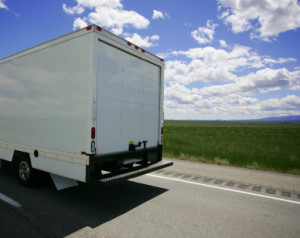
Guest Bloggers: HireAHelper.com
You’re on a tight budget for your move. You don’t want to do it yourself (DIY) and inflict the sweat and pain on your body, and you also don’t want to have to bribe your friends and family to begrudgingly help you on a Saturday. The quotes you’ve seen from full service moving companies (they provide the truck, pack, load, drive and unload) seem too expensive. Fortunately, there is another option: moving labor services. It’s halfway between the DIY option and the full service option. With a full service move, you pay for the convenience of having someone else take care of every aspect. However, if you compartmentalize it and do the easy part yourself, you get a cheaper alternative. You can rent your own truck and have someone else load it and unload it for you. However, it’s very important to hire moving labor that’s reliable, experienced, and well-reviewed in order to protect yourself and your belongings. You can find such movers and their reviews through services like HireAHelper.com, an online moving labor marketplace.
Since a move breaks down to two main components, transportation and labor, it’s easy to split up. Depending on the size, distance, and whether or not you need storage will determine the best mode of transportation for your move. The three main options are the ubiquitous rental truck, the multi-purpose portable storage container (“pod”), or the lesser known “rent space in a commercial semi-trailer” if you’re moving long distance. Let’s take a look at how moving labor works with each of these.
If you’re moving locally and don’t need storage, then a rental truck should work perfectly for you. You can normally get a truck, at most, for a few hundred dollars to take care of your move. Then, you can hire moving labor to do the heavy lifting. They can pack up your belongings in boxes if you’d like them to, or you can save money and do that part yourself, since it’s not too taxing. You’d then decide if you need your movers to load, unload, or both. Since you rented the truck, you’ll be driving your belongings to your new residence while the movers follow you in their own transportation. However, it’s understandable if you’re not comfortable driving that monster rental truck with the thousands of pounds of your belongings in it, which is why most moving laborers also offer driving help. They can drive it for you for an additional fee if you so desire. Otherwise, they’ll follow you like your own personal moving escort to your unload destination, or destinations. That’s right. If you need to load and/or unload at multiple destinations that’s not a problem. For example, if you need to pick up or drop off additional items at a storage unit, your movers will simply follow you to each location and load and/or unload your belongings. You can think of them as your moving entourage (they may or may not be able to get you to the front of the line at the storage facility office, truck rental counter, etc.).
If you do need temporary storage, perhaps you can’t move into your new place immediately or are doing a remodel, then a pod is a great solution. The pod company drops the container off at your residence and then you’re free to load it as you like. You can hire moving labor to load all or part of it. The pod company picks it up and stores it for however long you need and then delivers it back to you. Then, when you’re ready to have it unloaded, simply schedule some more moving labor to move your belongings out of the pod and into your new home. With this option you get to take advantage of the convenience of a pod without having to load and unload it yourself.
If you’re moving long distance, then renting space in a commercial trailer might be a good option for you. Services like Movex have fleets of commercial trailers for transporting household goods. However, since most people don’t need the space of the whole trailer, it’s split up into compartments which are rented out to different customers. The shipping cost is shared and it makes it a considerably cheaper option for you. Again, by compartmentalizing the aspects of your move, you create a much cheaper alternative. Now all you do is hire moving labor to load your portion of the trailer and you’re all set. You might be thinking, “Well, my moving labor company won’t be able to unload me thousands of miles away though.” Good point. Fortunately, HireAHelper.com has a network of moving labor companies across the country, from Los Angeles movers to New York movers, so there’s qualified moving labor for you on both ends of your move.
Remember, it’s important to know your moving labor company before you hire them, and it’s also beneficial to have a third party involved to provide accountability. Hiring day laborers off the street may seem like a cheap option at the time, but it can end up costing you much more. So, don’t put yourself in a position to be scammed or cheated, use a service like HireAHelper.com where you can find out what kind of company you’re hiring before you hire them by reading their past customer reviews.
Have a great move!
HireAHelper.com Staff
Oceanside, CA 92056
(866) 558-2406
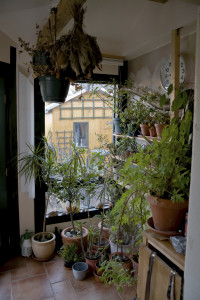
A few indoor plants can really brighten up your home
By Vance Stevens
Special to Relocation.com
While commercial settings typically offer an atmosphere of large, indoor plants, they don’t have to be limited to dentists’ offices and malls. In fact, indoor plants add beauty and function to any indoor space and can be a perfect addition to brighten up your home during those chilly winter months. Green plants also help filter the air, creating a healthier environment for work or play. And with a few strategically placed indoor plants, you can transform an ordinary space into a stress-free zone. Here are a few indoor plants that will help you brighten up your favorite room.
Palm – Coming in a wide variety of sizes and leaf shapes, palms range from just a few feet to over 20-feet tall. A few of the most popular pines are the Sentry and Bamboo palms, which can reach an average height of 9 to 10 feet, and the Areca and Chinese Fan palms, which average 5 to 6 feet in height. There are many different type palms to will meet your style needs.
Chinese Evergreen – The Chinese evergreen is an excellent selection for indoor gardening and decoration. With its low lighting needs and low maintenance, the plant is an aesthetic addition as well as a healthy one that is listed as a natural indoor air purifier.
Norfolk Island Pine – If you are looking to add a touch of the tropics indoors, Norfolk Island pines can reach a height of more than 10-feet and bring with them a rich aroma of the great outdoors. The plant’s resemblance to another type pine has made it a popular holiday decoration. Norfolks can survive in only household incandescent or fluorescent lighting if they receive a minimum of 16 hours of light each day.
Chrysanthemums – Chrysanthemums are resilient, colorful flowers that are grown indoors in any climate and outdoors. The plant is easy to care for and thrives with given exposure to at least a half-day of sunlight, moist soil and room to breathe. Chrysanthemums come in a wide variety of shapes and colors.
Ficus – There are several types of Ficus (also known as figs), and a large majority of them come well-suited for the role of large, indoor plant. Ficus Alii, (a type of Ficus characterized by deep green, long, narrow leaves) rubber plants and fiddle leaf figs are some of the most popular, and grow from 4 to 12 feet tall. The Ficus requires daily sunlight, ample humidity and water every 1-2 days.
Spider Plant – Spider plants are fast-growing, attractive perennials that feature slim, elegant leaves and small white flowers. A plant able to tolerate low-light conditions well, the spider plants can grow in the shade if given continually moist soil. If left in extended dry conditions, the tips of the long leaves will turn brown until water resumes. The spider plant is also excellent for filtering airborne toxins.
Wandering Jew – The wandering jew is a popular indoor plant that good for cleaning the air in the room. It is often grown in a hanging basket due to its sprawling tendencies. The plant’s 3-inch-long leaves are charmingly spotted and covered with a fine layer of soft fuzz. Place the plant in rich, loose soil in a dimly lit spot; remember to keep the soil moist for optimal growth.
Succulent/Cactus – There are several types of succulents and cacti that make impressive large, indoor plants. Milk Stripe euphorbia often exceed four feet in height and are nearly as wide. There are a number of tall, upright cactuses perfect for the indoors, such as Snowball, Silver Torch and the Column cactus.
If you have any questions, comments or inquires, please contact me at editorial@relocation.com.
November 2nd, 2010 by
Admin
Categories:
Celebrity Real Estate,
condos,
foreclosures,
Home Improvement,
homes for sale,
Moving,
Plan Your Relocation,
Real Estate,
Relocation,
Relocation Data,
rentals Comments:
No Comments » 
Val Kilmer's Ranch - Listed for sale at $23 million (Photo Credit: Santa Fe Realty Partners)
By Serena Norr
Grandiose properties – in both price and size – are on this week’s Beat. Although this is no different from any week on the Beat, we were particularity intrigued by Val Kilmer’s massive Rowe, New Mexico ranch that encompasses 5,328-acres and 11, 573-square-feet of living space. The new property owners (whomever they may be) will also enjoy seven bedrooms and eight bedrooms as well as 10 springs and 10 miles of hiking and biking trails. This is, of course, for the reduce price of $23 million – guess a luxury ranch isn’t in our future. The Donald is also selling one of his many properties. This one, located in Rancho Palos, California, includes a 18-hole golf course, ocean views, five bedrooms and 11,000-square-feet of living space. We also heard that Bill and Giulania Rancic purchased a luxurious Chicago mansion this week as did Toni Collette who purchased a Spanish-style home in California for $1,300,000. Until next week…

Donald Trump's Rancho Palos Estate - Listed for $12 Million (Photo Credit: Housing Watch)
• Donald Trumps Puts California Estate on the Market
Real estate maven, Donald Trump, recently placed one of his zillion-plus properties on the market. A bit of an overstatement, but as we all know the name Trump equals real estate. This latest property on the market, located in Rancho Palos, California (a community outside of Los Angeles) is situated on 300 acres of land and includes 11,000-square-feet of living space. Listed for sale at $12 million, the Mediterranean-style property was purchased for $27 million and includes five bedrooms, several fireplaces, a 18-hole golf course an outdoor area with an infinity pool and gorgeous views of the ocean due to its location on the bluffs of the Pacific Ocean. The house also includes a glass wine room, a game room and a master bath with a spa and a double shower.

Bill and Giulania Rancic's New Mansion - Purchased for$1,560,000. (Photo Credit: Laura Rubin Dresner)
• Bill and Giulania Rancic Purchase Mansion for $1,560,000
Bill Rancic, winner of the first season of “The Apprentice” and his wife, Giuliana Rancic, recently purchased a mansion in Hinsdale – a suburb outside Chicago – for $1,560,000. As a seasoned real estate flipper, Bill Rancic is no stranger to real estate purchases with homes in both Chicago and Los Angeles. This latest home, calculating at 12,000-square-feet, includes seven bedrooms, 9.5 bathrooms, a 1.5 car garage and a state-of-the art security system.

Pics of Toni Collette's New Home - Purchased for $1,330,000. (Photo Credit: The RealEstalker)
• Toni Collette Buys a Hollywood Home for $1,330,000
Actress Toni Collette, “United States of Tara” and her partner recently purchased a new home in Los Angeles for $1,330,000. Encompassing 2,236-square-feet, the home also includes three bedrooms, 3.5 bathrooms (including one bathroom in the pool house) and a wide front porch. The Spanish-style home is also gated and fenced and features walnut-flooring, a fireplace, an arched doorway, and a modern kitchen with stainless steel appliances. Collette and her partner also own properties in Australia and Ireland.
• Actress Amanda Seyfried Buys at Devonshire House
Mean Girl Amanda Seyfried recently purchased a luxury condo in NYC for $1.875 million. Located in Central Village’s Devonshire House, a pre-war condominium designed by architect Emery Roth, Seyfried’s unit includes two-bedrooms, two-bathrooms and 1,585-square-feet of living space. The building itself also includes interesting amenities such as a 24-hour doorman, a courtyard garden, a rooftop terrace, an on-site gym and storage, a children’s play room and a cold storage unit for groceries.
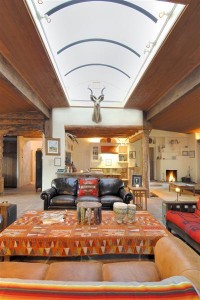
Val Kilmer's Ranch - Listed for $23 million (Photo Credit: Santa Fe Realty Partners)
• Val Kilmer Re-lists Rowe, New Mexico Ranch
Much as been publicized about Val Kilmer and his attempts to sell his 5,328-acre ranch located in Rowe, New Mexico. Originally listed for $33 million, the price was recently reduced to $22 million (a substantial price jump) that Kilmer, at one point, wanted to turn into a lodge. According to the listing, the property, located in the the wilderness, is situated near 10 natural springs with six miles of the Pecos River and 10 miles of hiking and biking trails. The house itself includes seven bedrooms, eight bathrooms and 11,573-square-feet of living space.

Explore your new town on your bike.
By Vance Stevens
Special to Relocation.com
Whether you are moving across town or across the country, relocating can quickly become a trying and overwhelming task. Luckily, the difficult part is behind you: the furniture is in place, boxes are unpacked and all the pictures hung. All that is left now is to settle in and get acquainted with your new community. Here are a few tips to help you do just that.
Get lost.
One of the best ways to learn a new town is simply to get lost. Hop in the car (or grab a bike) and hit the streets. There is no need to map out the trip or worry about how long you will be gone – just go. Explore the area, stopping at interesting spots and taking in the local scenery. Keep your eyes peeled for landmarks and even take a note or two on places you may want to visit later. Getting lost will bring you closer to your new home, while getting you familiar with the town’s layout and street names.
Shop locally.
Maybe the most enjoyable way to get to know the people in your community is to do a little shopping. Visit a few local shopping areas and talk with local sales reps and small business owners. This is a wonderful to get the pulse of your community as well as an opportunity to meet people who reliable on the local economy for employment. Ask for suggestions on best places to visit and where in town to go for the best cheeseburger.
Join a club.
Look around town for different clubs or organizations to join. My communities have neighborhood watch programs, offering the opportunity to meet new people and to do your part in keeping the neighborhood safe. Health clubs or gyms are another way to meet people in your town with similar interest. Look for local sport clubs such as walking, yoga or hiking groups and be sure to check the local paper for community events looking for volunteers.
Have a yard sale.
If you were not able to bring yourself to get rid of unneeded possessions before your move, here the perfect opportunity to make some additional room in your new home and meet a few neighbors while you’re at it. Putting together a yard sale is the perfect way to bring the neighborhood to you. Gather the things you won’t be using at your new home, pick a Saturday or Sunday (or both) and spend the day with your family getting to know your neighbors and ridding yourself of all those excess possessions.
Classes.
Sign up for a class at a local university or community college. Many schools offer night or weekend classes for those who work or have other obligations during the day. This is the perfect way to get know people in your area that share similar interest and, most likely, share in a similar schedule as you do. Take this opportunity to make new contacts through group projects and to connect with local professional who may be able to suggest popular social gatherings. Take a glance at campus message boards where students and facility will post information on upcoming community events.
If you have any questions, comments or inquires, please contact me at editorial@relocation.com.